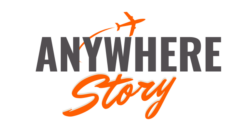In the dynamic landscape of search engine marketing (SEM), launching a Pay-Per-Click (PPC) campaign is just the beginning of the journey. In 2025, as artificial intelligence and machine learning become more integrated into platforms like Google Ads and Microsoft Advertising, the real differentiator between profit and loss lies in continuous, intelligent optimization. A “set it and forget it” approach is a relic of the past. Today’s advertisers must act as strategic partners with the platforms’ algorithms, constantly refining every element of their PPC campaigns to maximize value. This guide provides a comprehensive framework for mastering PPC optimization ensuring your ad spend delivers measurable results and a competitive edge.
What Is PPC Optimization?
PPC optimization is the continuous, iterative process of analyzing and improving every component of your Pay-Per-Click campaigns to enhance performance. Think of it as fine-tuning a high-performance engine; it’s not a one-time fix but a cycle of measurement, testing, and refinement. This process goes far beyond simply adjusting bids. It involves a holistic review of your keyword research, ad copy, audience targeting, landing page experience, and conversion tracking infrastructure. The ultimate goal is to increase the efficiency and effectiveness of your campaigns, ensuring you achieve the highest possible Return on Ad Spend (ROAS).
Benefits of PPC Optimization
Dedicating resources to consistent PPC optimization is not just a best practice; it’s a strategic investment that yields substantial returns. The benefits are multifaceted, impacting everything from your bottom line to your brand’s visibility.
Enhanced ROI
This is the paramount benefit. By systematically improving campaign elements, you increase the value generated from every dollar spent. Optimization leads to more conversions for the same or lower cost, directly boosting your Return on Ad Spend (ROAS) and making your marketing budget more profitable.
Improved Ad Performance and Visibility
Platforms like Google reward well-optimized campaigns with a higher Quality Score. A strong Quality Score leads to better ad positions at a lower Cost Per Click (CPC), meaning your ads are seen more often by more relevant users, without necessarily increasing your bids.
Better Targeting and Reduced Ad Spend Waste
Optimization is the enemy of wasted ad spend. Through meticulous keyword management, the use of negative keywords, and precise audience targeting, you can ensure your ads are shown only to users who are genuinely interested in your offerings, dramatically reducing irrelevant and costly clicks.
Enhanced Data-Driven Decision Making
The optimization process generates a wealth of performance data. This data provides clear insights into what resonates with your audience—which keywords convert, what ad copy persuades, and which landing pages perform best. This empowers you to move beyond assumptions and make strategic, data-driven decisions across your entire marketing ecosystem.
Increased Conversion Rates
A primary goal of optimization is to improve your conversion rate. By ensuring a seamless and relevant user journey—from the search query to the ad copy to the landing page—you remove friction and make it easier for users to take the desired action, whether it’s making a purchase or filling out a lead form.
Cost Efficiency
Through improved targeting, higher Quality Scores, and better conversion rates, optimization makes your entire PPC operation more cost-efficient. You achieve more with less, allowing you to either reinvest the savings to scale your campaigns or improve the overall profitability of your marketing efforts.
1. Keyword Research and Management
Keywords are the bedrock of any search-based PPC campaign. Effective management is a continuous process, not a one-time task.
Understanding Search Intent
In 2025, understanding the user’s “why” behind a search is more critical than ever. Search intent can be categorized as:
- Informational: The user wants information (e.g., “how to fix a leaky faucet”).
- Navigational: The user wants to find a specific website (e.g., “Facebook login”).
- Commercial: The user is researching before a purchase (e.g., “best running shoes 2025”).
- Transactional: The user is ready to buy (e.g., “buy Nike Air Max online”). Aligning your keywords with the correct intent is fundamental.
Using Keyword Research Tools
Leverage a suite of tools for comprehensive keyword research. This includes industry standards like Ahrefs and Semrush, as well as the platform-native Google Keyword Planner. These tools help you discover new keyword opportunities, estimate search volume, and gauge competition.
Analyzing Competitor Keywords
Conduct digital reconnaissance to see which keywords your competitors are bidding on. Tools like SpyFu or Semrush can reveal their top-performing keywords, giving you insights into their strategy and helping you identify gaps you can exploit.
Long-Tail Keywords
Long-tail keywords (phrases of three or more words) are invaluable. They typically have lower search volume but much higher intent and a lower Cost Per Click (CPC). For example, instead of “shoes,” a long-tail keyword would be “men’s waterproof hiking shoes size 11.”
Negative Keywords
Negative keywords are the guardrails of your campaigns. They are terms you add to a campaign to prevent your ad from showing for irrelevant searches. For example, a company selling premium software would add “free” and “cheap” as negative keywords to avoid attracting users with the wrong intent and wasting ad spend.
Analyze Keyword Performance
Continuously monitor keyword performance in your ads manager. Pause or remove keywords with a low Click-Through Rate (CTR), poor Quality Score, or high cost per conversion. Double down on the keywords that are proven to drive results.
2. Ad Copy and Creative Optimization
Your ad is the direct link between a user’s search and your brand. It must be compelling, relevant, and persuasive.
Crafting Compelling Ad Copy
Your ad copy should speak directly to the user’s needs and the intent behind their search. A great ad typically includes:
- A headline that mirrors the user’s search query.
- A clear value proposition that answers “What’s in it for me?”
- A strong call-to-action (CTA) that tells the user what to do next.
Optimizing Creative Assets
For Display, Video, and Social PPC, your creative assets are paramount. Use high-resolution images and professionally produced videos. Ensure all creatives are optimized for mobile viewing and use A/B testing to determine which visuals generate the most engagement and conversions.
Leveraging Responsive Search Ads (RSAs)
Responsive Search Ads (RSAs) are the standard in Google Ads. You provide multiple headlines and descriptions, and Google’s machine learning mixes and matches them to find the highest-performing combinations for different search queries. Continuously refresh your assets with new messaging to give the algorithm more to test and optimize.

3. Bidding Strategies
In 2025, successful bidding is a collaboration between human strategy and machine learning.
Bid Adjustments for Device, Location, and Audience Type
While automated bidding strategies (like Target CPA or Maximize Conversions) are incredibly powerful, you can still provide strategic oversight. Use bid adjustments to tell the algorithm which segments are more valuable to you. For example, you might apply a +20% bid adjustment for users searching on mobile devices if you know they convert at a higher rate.
4. Landing Page Optimization
You can have the world’s best ad, but if it leads to a poor landing page, you will not get conversions.
Aligning Landing Pages with Ads
Ensure strong “message match” between your ad and your landing page. The headline, offer, and imagery on the landing page should directly reflect what the user clicked on. A disconnect here leads to a poor user experience, high bounce rates, and a lower Quality Score.
Improving Core Web Vitals
Core Web Vitals (CWV) are a set of metrics related to speed, responsiveness, and visual stability. Google uses CWV as a ranking factor, and it directly impacts user experience. A fast-loading, stable page is crucial for landing page optimization and keeping potential customers engaged.
5. Conversion Tracking and Analytics
If you can’t measure it, you can’t optimize it. Accurate tracking is the non-negotiable foundation of PPC optimization.
Setting Up Conversion Tracking
Properly install the platform’s tracking tag (e.g., Google Ads tag) to monitor every valuable action on your site. This includes macro-conversions (like purchases and form submissions) and micro-conversions (like newsletter sign-ups or PDF downloads) that signal user engagement.
Attributing Revenue to Campaigns
Move beyond last-click attribution. Explore data-driven or position-based attribution models to better understand the entire customer journey and assign appropriate credit to the ads that assist in a conversion, not just the final one.
6. Campaign Data Validation and Management
Regularly audit your accounts. This means validating that conversion tracking is firing correctly, ensuring budgets are paced appropriately, checking for broken links, and maintaining a logical campaign and ad group structure. Good campaign management hygiene prevents costly errors.
Common Challenges and Solutions
Challenge 1: Low Click-Through Rates (CTR)
Solution
Improve the relevance of your ad copy to your keywords. Use compelling ad extensions (sitelinks, callouts) to make your ad larger and more informative. Refine your keyword lists to be more specific to your target audience.
Challenge 2: High Cost Per Click (CPC)
Solution
Focus on improving your Quality Score. This is achieved by increasing ad relevance, improving landing page experience, and boosting your expected CTR. Also, target less competitive long-tail keywords.
Challenge 3: Poor Conversion Rates
Solution
The issue is often on the landing page. Conduct landing page optimization by improving page speed, ensuring message match with your ad, simplifying your form, and making your call-to-action more prominent and persuasive.
Challenge 4: Budget Constraints
Solution
Focus your budget on your highest-performing campaigns and keywords. Use ad scheduling to show ads only during peak conversion times. Employ precise geographic and audience targeting to eliminate waste.
Challenge 5: Difficulty in Tracking Conversions
Solution
Use Google Tag Manager to simplify tag implementation and management. Double-check that the tracking code is on the correct confirmation or “thank you” pages. For advanced accuracy, explore setting up server-side tagging to mitigate data loss from browser restrictions.
Frequently Asked Questions
What is PPC optimization?
PPC optimization is the holistic science and art of continuously refining every element of your Pay-Per-Click campaigns—including keywords, ad copy, bids, targeting, and landing pages—to improve performance, maximize your return on investment, and achieve specific business goals more efficiently.
What are the benefits of PPC optimization?
The primary benefits include a higher Return on Ad Spend (ROAS), lower wasted ad spend, improved Quality Score and ad visibility, increased conversion rates, and access to valuable performance data that informs smarter, data-driven decisions for your entire marketing strategy.

